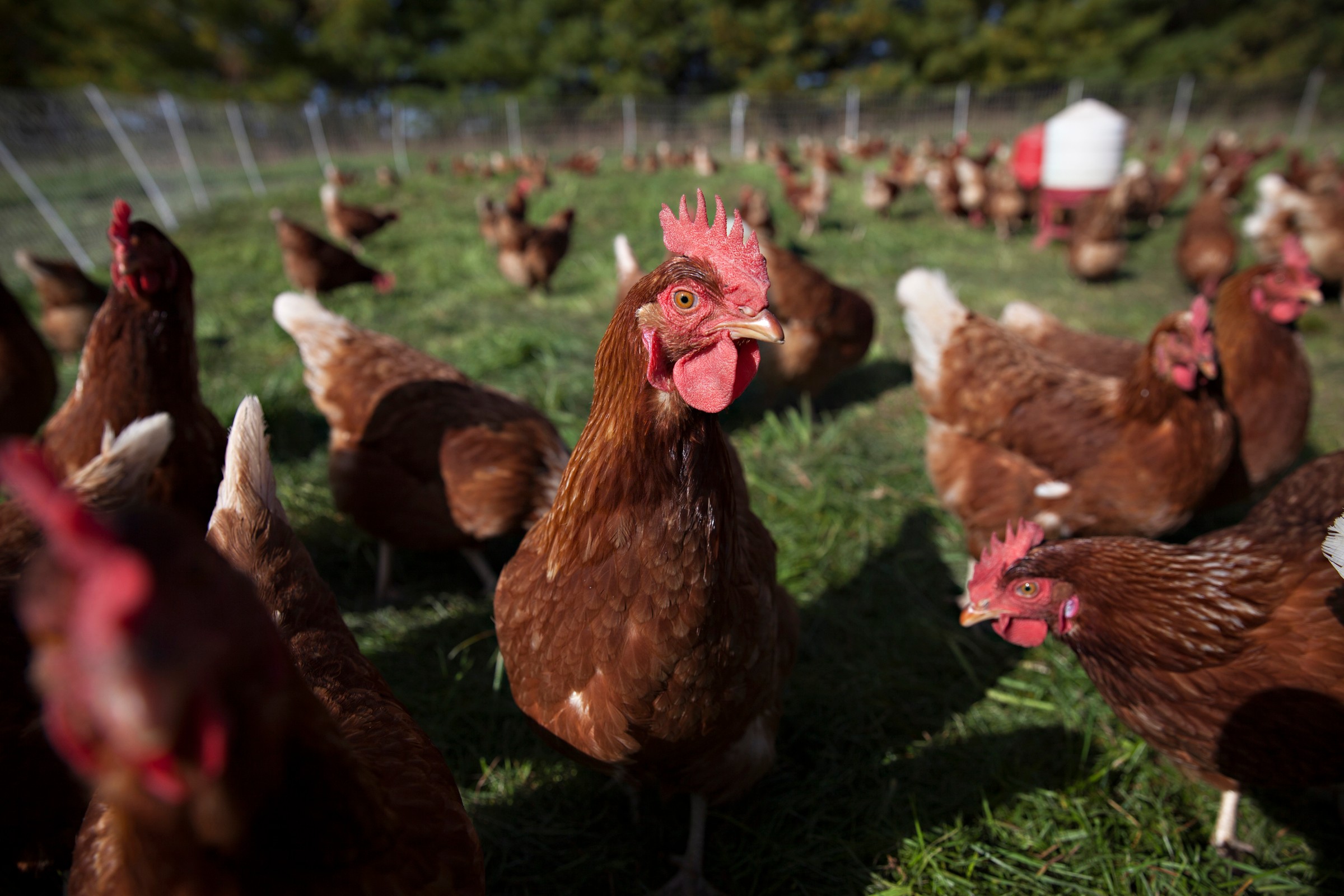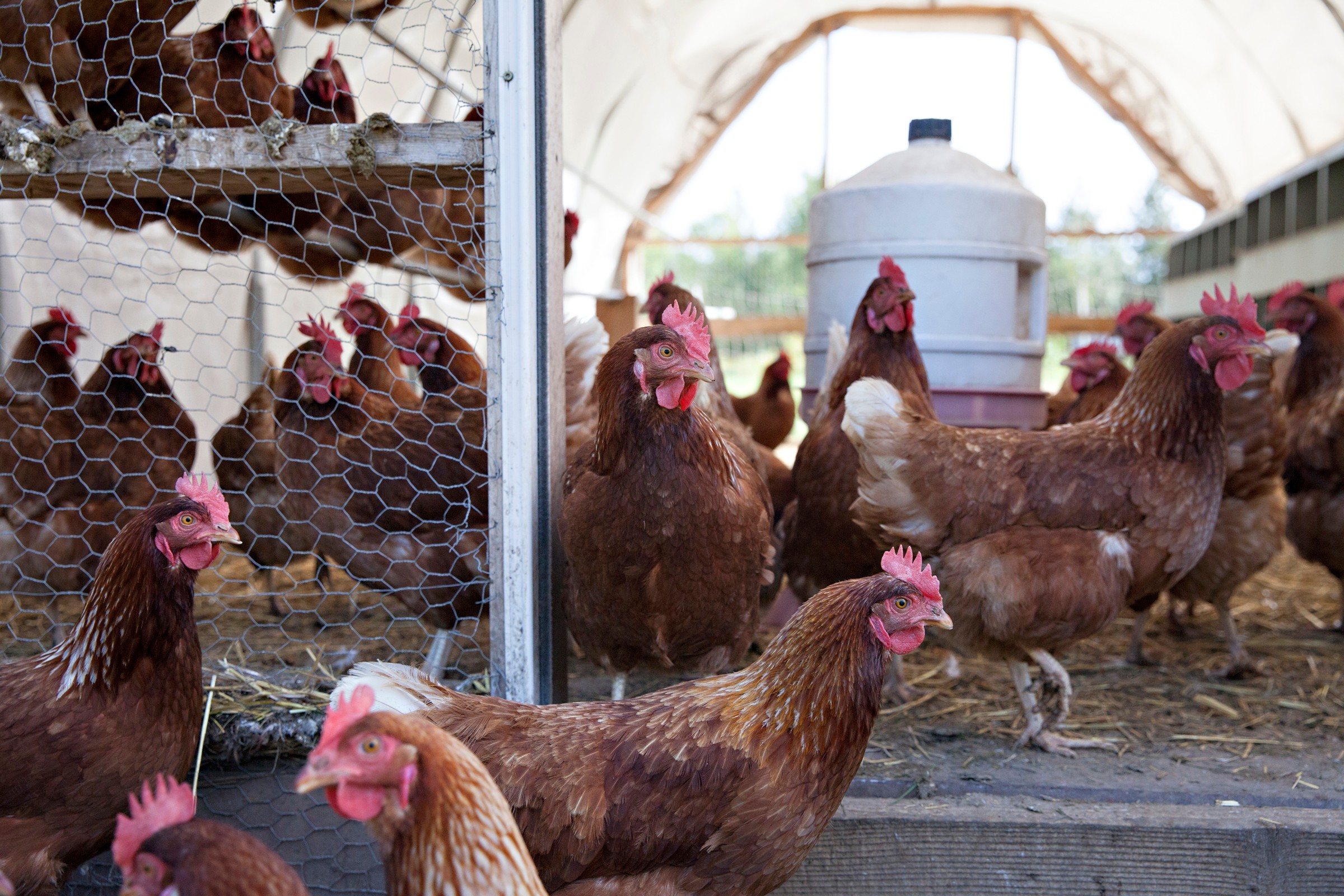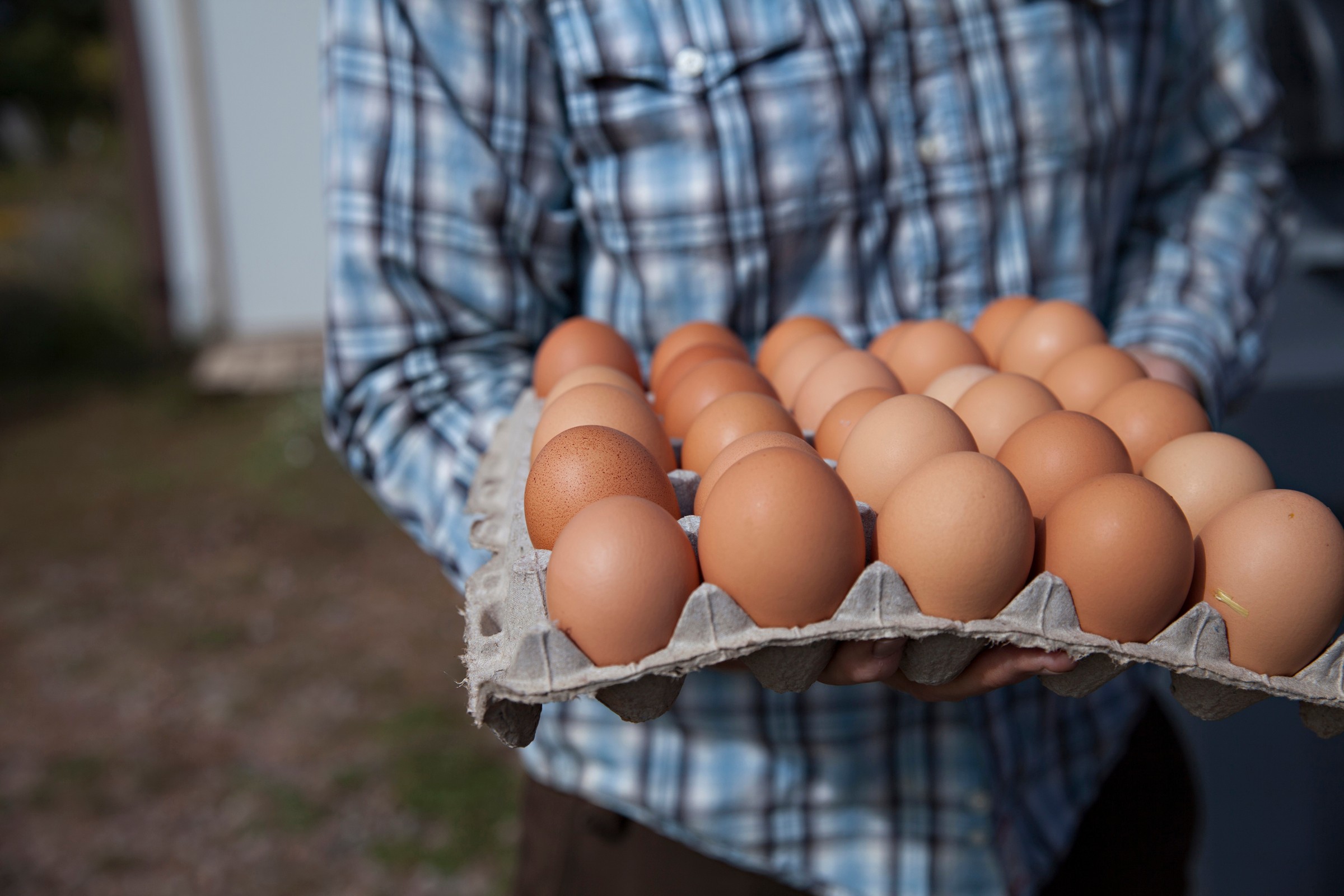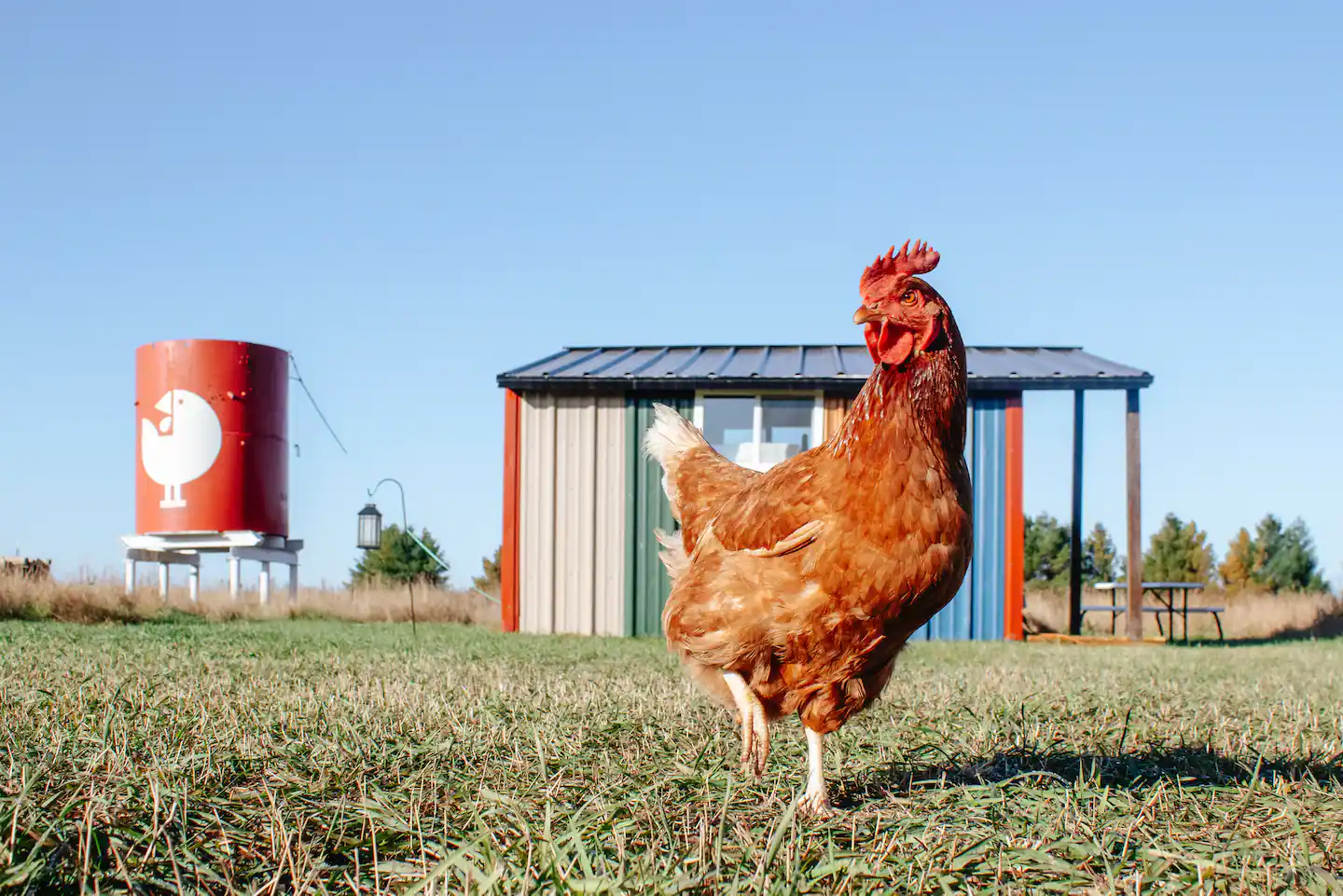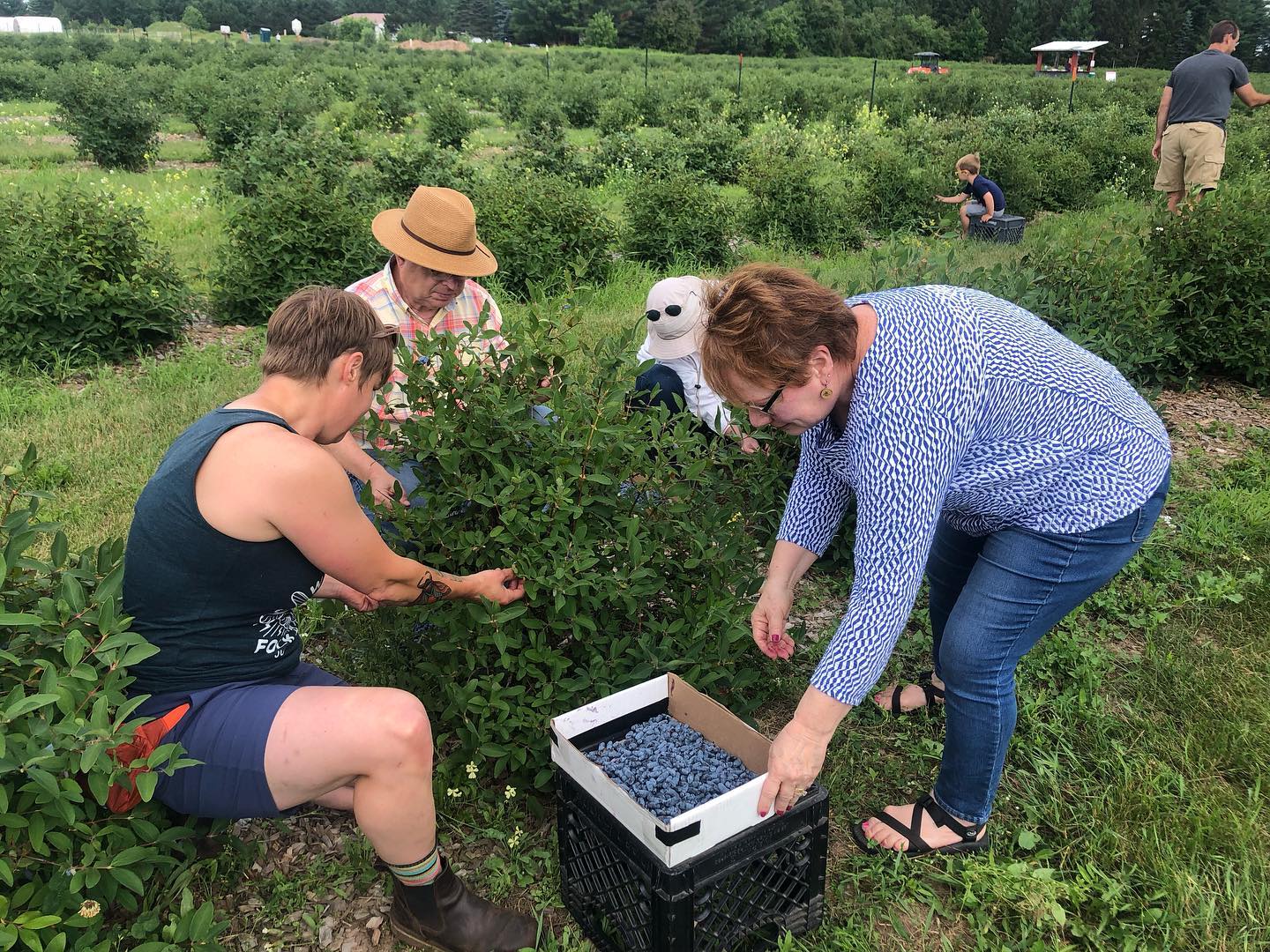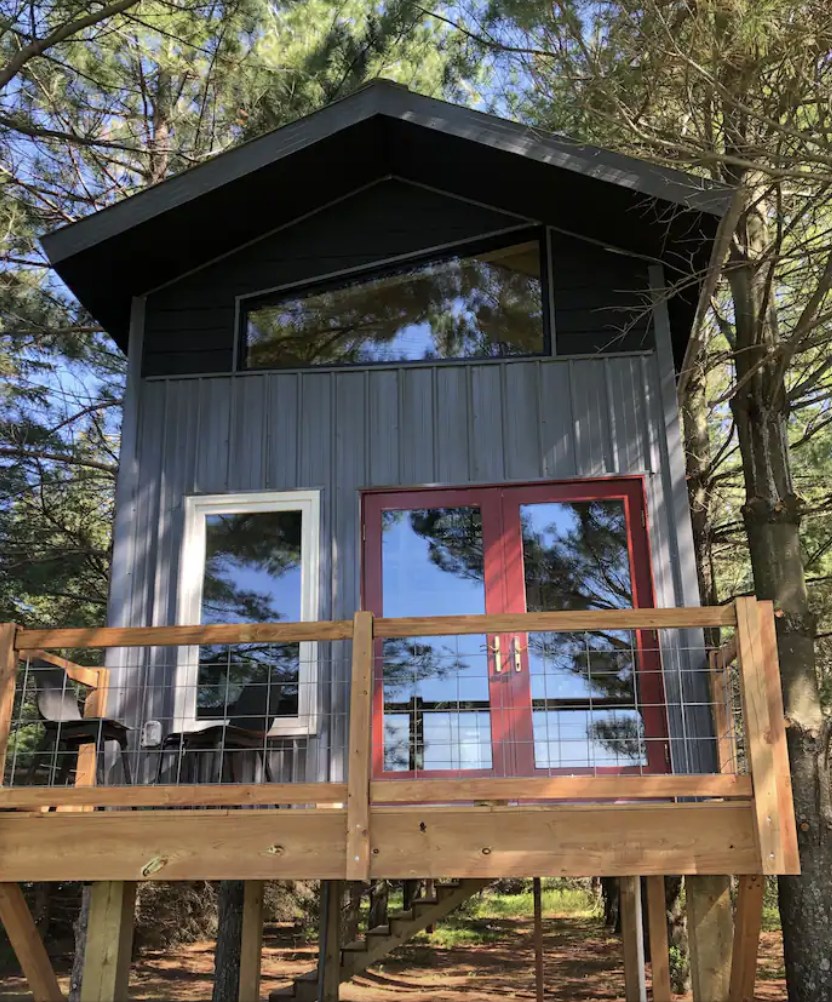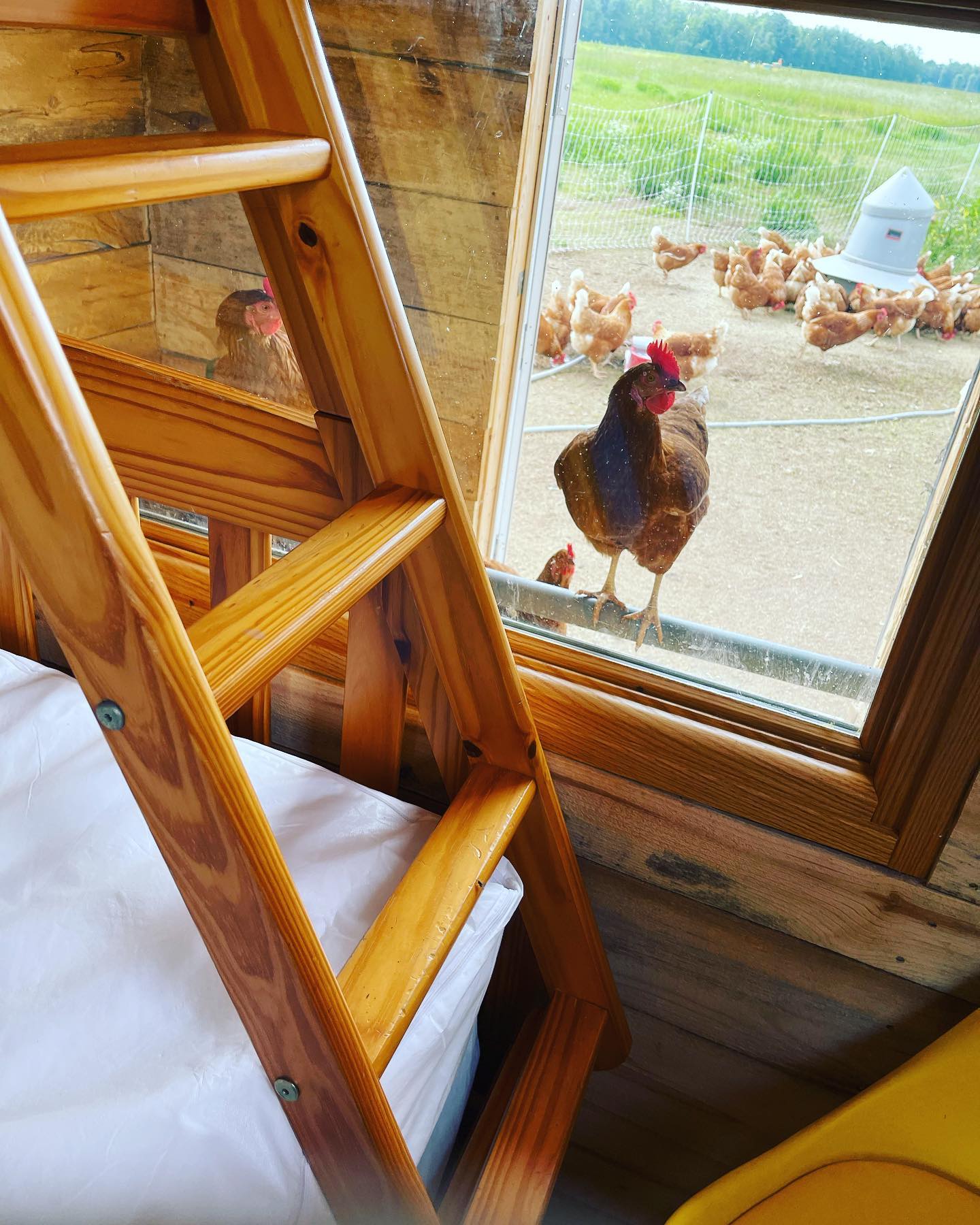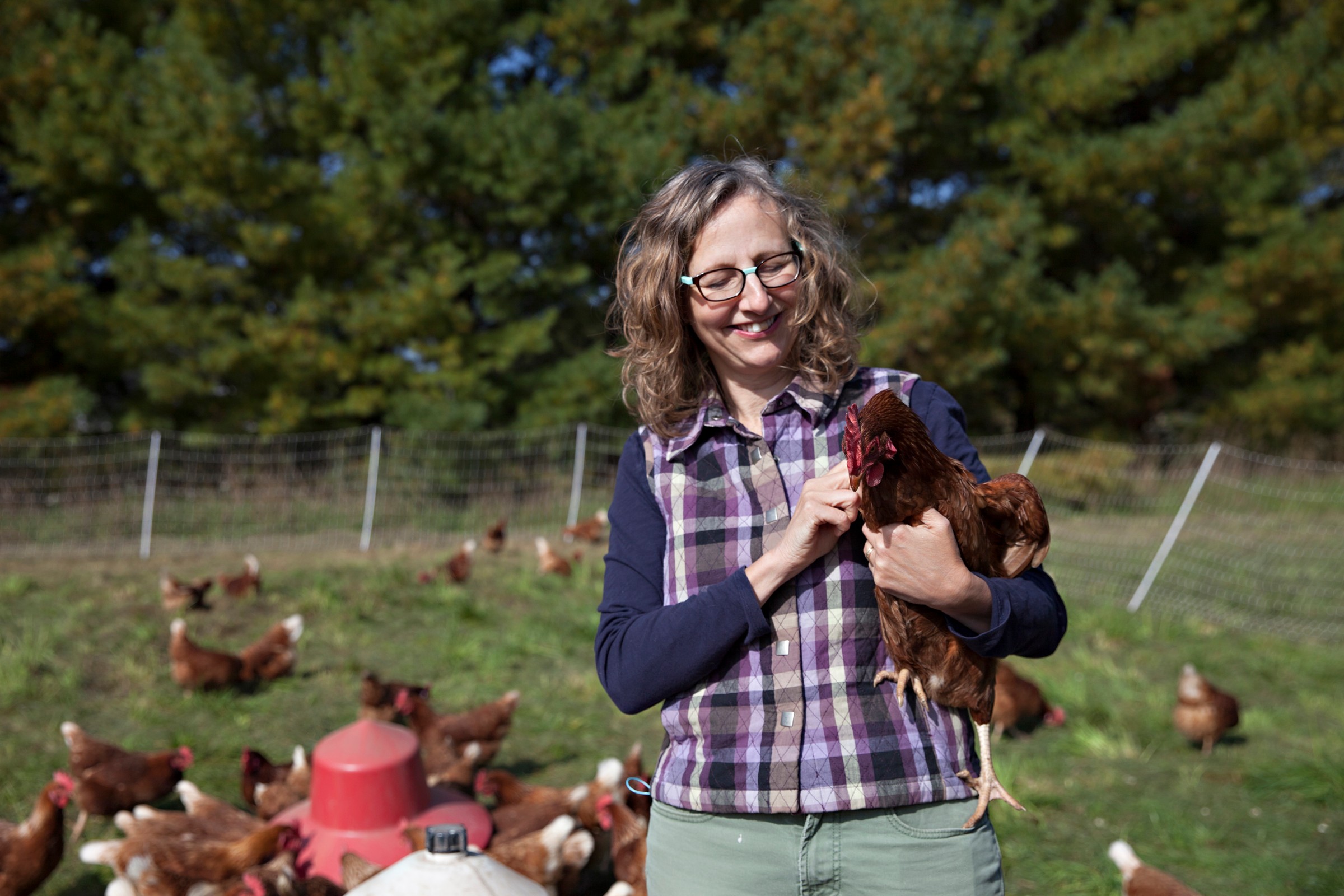

Today we’d like to introduce you to Lucie Amundsen (ah-Muh-Son).
Alright, so thank you so much for sharing your story and insight with our readers. To kick things off, can you tell us a bit about how you got started?
Oh goodness, what a question! I did write a whole book on this, but I’ll give the Reader’s Digest version.
Back in 2011, my husband Jason went through an early midlife crisis that took him from keyboard jockey as a grant writer to a farmer/business owner. We were out to a rare dinner without kids that I mistook as a date night but was really an opportunity for him to talk to me about…commercial poultry. A public flight ensued involving tears and honking. (I’m not a delicate crier.)
This is a quote from the book, “Start a farm?” I thought. “This is a man who until a few years ago could not identify a pear.”
After much to do, we did rent some land and buy some pullets (sassy teenage hens). They arrived on the hottest June day on record. I wrote, “It turned out to be a baptism by dehydration. The hens were delivered on a boiling June day… Squashed into crates… the birds were a parched, traumatized, pecked and broken mess.”
If you can believe it, the first winter was even worse.
But, because of our community support, we trudged forward. Eventually, we were approached to work with other farmers under our brand. We opted for a rare “open contract” situation, giving the farmers equal rights to leave the contract, which is why we call them partner farms.
We provided guidance to these partner farms, assisting them in meeting pasture-raised standards and offering ongoing support. This collaborative model allowed Locally Laid to scale sustainably while providing small farmers with a steady income. Our partner farmers received $42 for every $100 spent by consumers on their eggs, a significant improvement compared to the $20 that farmers received in the early 2000s.
So much else has happened, but this was our beginnings.
Can you talk to us a bit about the challenges and lessons you’ve learned along the way. Looking back would you say it’s been easy or smooth in retrospect?
Oh, friend, no it was not a smooth road.
Our first flock of chickens had been barn raised, which is typical. But the first time they were on pasture and we were waiting for them to “come home to roost,” they neither came home nor roosted. It hit me that these birds were not reacting to the circadic rhythm of the sun because they have NEVER SEEN THE SUN. We popped over 1,000 birds into their hoop coops and later Jason put each bird onto her roost one-by-one-by-one until a couple of weeks later, she remembered she was a chicken.
(As Jason started this task he suggested I go home and take a bath, have a glass of wine. I suggested a box.)
One terrible hardship was getting our egg-washing facility going. We followed all the rules, and as our birds were starting to drop 1,500+ eggs a day, the inspector came out and failed us.
“Although we got the rules from the state of Minnesota regarding egg processing before we got chickens, we did not have a conversation with the inspector in advance,” he told me. “As a result, when the inspector arrived, he said we had received an incomplete set of rules and that we failed. We had to adapt. It wasn’t pretty, and though we eventually passed.”
And we soldiered on.
Alright, so let’s switch gears a bit and talk business. What should we know?
Locally Laid Egg Company works with other mid-scale farmers (using open contracts — almost unheard of in our industry) to provide pasture-raised eggs in regional supermarkets and co-ops. Something we are really proud of is that we do NOT require our farmers to buy our chicks, buy our feed or use our egg-washing facilities.
Instead, we helped them build a state-certified egg washing facility, work with their local vendors to buy and mix feed rations, and procure their own birds. This led to a local economic multiplier effect: When consumers purchase Locally Laid eggs, those dollars support not just the farm but also local feed suppliers, equipment vendors, and other regional businesses in the supply chain.
I am most proud that more than one of our partner farmers who had been renting their land for years were able to buy their farms on the strength of their locally laid contracts. That’s generational wealth, which is just goose-bumpity cool.
Is there anything else you’d like to share with our readers?
They can likely buy the book, Locally Laid, used for a few dollars. I really did try to somehow make our face-fall into agriculture amusing and honest, while teaching readers about the economic realities farmers face.
Truly, I don’t think I could write this book today, as it is so honest and the world is just a meaner place.
We now have 10 acres of Pick-Your-Own berries, which is just so much work, but it is lovely to see people out at the farm enjoying it all.
We also have AirbnBAWKs. We have one fancy lofted tiny house, but also three rustic bunkhouses. The bunkhouses are 2/3rds people coop, 1/3 chicken coop with glass in between. All guests have the option to do chores with us in the morning and the whole venture has been really wonderful. It creates a small, steady cash flow, which incredibly helps our business.
Pricing:
- We have not raised our prices through two egg shortages as our inputs haven’t gone up enough to warrant it. There’s a lot of price gouging out there.
Contact Info:
- Website: https://locallylaid.com/
- Instagram: locallylaideggs
- Facebook: locallylaideggs
